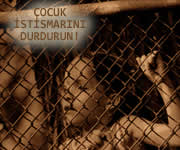
Graffiti:
"Unauthorized writing or drawings on a surface in a public place."
This is how Oxford English Dictionary describes what a graffiti is. Graffiti are very important records of the common folks in a society.
They come out with no control or regulation. Sometimes they represent the views of an individual living in it's time, sometimes they represent a widely accepted view which was being suppressed by the ruling hegemony; sometimes they are nasty, sometimes they are wise, sometimes they are more worthy than formal records...
 The media of a Graffiti is the street. That is very important and the main point of the very fabric of the relationship between the Graffiti and the masses. It is anonymous, anyone could have done it. I will give you some examples of "Ancient Graffiti" around the world. You could have a glimpse of the mind-set of the carvers(yes, not painters) of these Graffiti makers, which helps to understand their time from the angle of a common folk.
The media of a Graffiti is the street. That is very important and the main point of the very fabric of the relationship between the Graffiti and the masses. It is anonymous, anyone could have done it. I will give you some examples of "Ancient Graffiti" around the world. You could have a glimpse of the mind-set of the carvers(yes, not painters) of these Graffiti makers, which helps to understand their time from the angle of a common folk.Alexamenos Graffito
 Did you know that the earliest pictorial representation of the crucifixion of Jesus Christ is a Graffiti? But not a praising one so. This graffiti is known as the "blasphemous graffiti" as well. It is dated back to 1st century AD and it shows a man worshiping to a crucified donkey. Unsuspectingly, this graffiti had been carved by a non-Christian and the crucified donkey represents Jesus Christ.
Did you know that the earliest pictorial representation of the crucifixion of Jesus Christ is a Graffiti? But not a praising one so. This graffiti is known as the "blasphemous graffiti" as well. It is dated back to 1st century AD and it shows a man worshiping to a crucified donkey. Unsuspectingly, this graffiti had been carved by a non-Christian and the crucified donkey represents Jesus Christ.There is a writing which comes with the picture as well. The writing is in Greek but with a wrong grammar. It is written "Alexemenos sebete theon" which actually have to be "Alexemenos sebetail theon"; which means "Alexemenos worships his god". So someone was mocking the belief of Alexemenos, and having fun with the guy he believed (Jesus Christ of course). But Alexemenos had his answer. Next to this Graffiti there is a writing in Latin that goes "Alexemenos fidelis" ;"Alexemenos the faithful". Apparently, Alexemenos wanted to react.
Political Graffiti of Pompeii
 Like everything, graffiti of Pompeii had been reserved in the volcanic ash untouched. On the left, you see a graffiti on a wall which caricaturizes a Pompeian politician with exaggerated features. Probably he was an old man as the graffiti reveals. There were so many graffiti in Pompeii, so that I will only write some of them.
Like everything, graffiti of Pompeii had been reserved in the volcanic ash untouched. On the left, you see a graffiti on a wall which caricaturizes a Pompeian politician with exaggerated features. Probably he was an old man as the graffiti reveals. There were so many graffiti in Pompeii, so that I will only write some of them."Suspirium puellarum Celadus thraex"(Celadus the Thracier makes the girls moan)
"Myrtis bene felas". (Myrtis, you do great blow jobs)
Well, no wonder why the brothels of Pompeii were so famous.
Hagia Sophia Graffiti
 This interesting graffiti was carved by Varangians (north Europeans who were serving in Constantinople) in the 9th century CE. It is written in Viking runes.
This interesting graffiti was carved by Varangians (north Europeans who were serving in Constantinople) in the 9th century CE. It is written in Viking runes.
The name of the soldier who had written this graffiti is Halvdan, as we read from the graffiti. It writes "Halvdan was here". Vikings were not Christians in those times so I wonder how could a "barbarian" Viking soldier had been let into the most sacred church of Orthodox Christianity. There is another graffiti in Hagia Sophia which has not been fully deciphered. Experts suspect that there might be more graffiti in Hagia Sophia.
Maybe you can hunt one?



0 comments:
Post a Comment